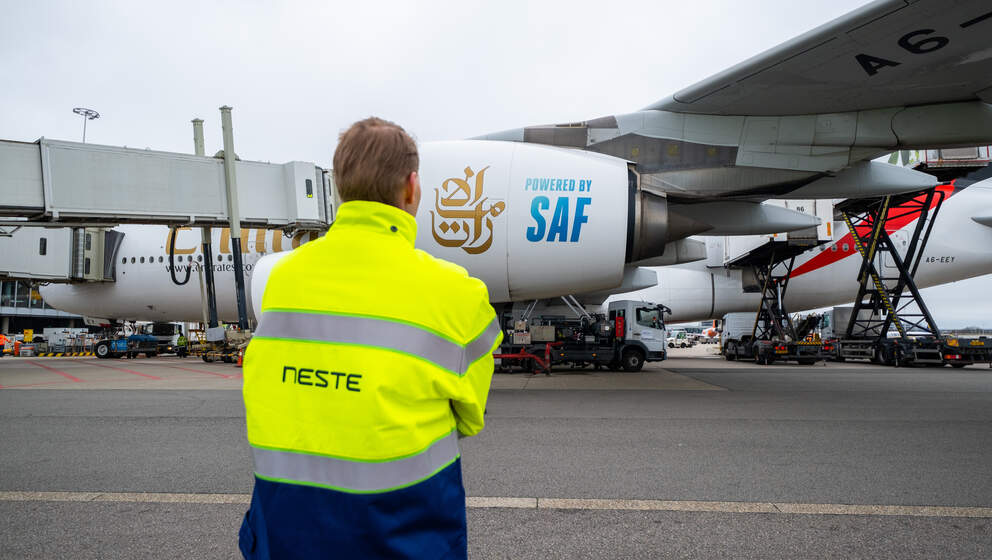What are the measures to reduce aviation emissions?
Companies in the aviation industry are collaborating and introducing measures to reduce emissions. Some of the measures include adopting new technology, efficient operations, improved infrastructure, the use of sustainable fuels and market-based measures.
Fuel makes up the main operating cost for airlines, which explains why fuel-saving measures are receiving interest from airlines. New technology in the form of a new type of aircraft makes a great contribution to efficiency: each new generation of aircraft is 15-20% more efficient compared with the previous generation. In addition, in-service aircraft are subject to continuous performance improvement.
By efficient operations, is meant the measures an aircraft runs once in service to ensure all flights maximize fuel efficiency. These include cutting unnecessary non-flight critical weight, introducing wingtip technology, modifying climbing and descending operations, and optimizing flights to avoid unnecessary time in the air. Improved infrastructure relates to improved navigational systems and procedures, ensuring that aircraft are guided through the air as efficiently as possible. The target is that aircraft can follow optimized direct routes with greater accuracy and efficiency. Cutting out unnecessary travel time can save fuel and decrease CO2 emissions.
Sustainable aviation fuels can be up to 80% less carbon-intensive over their lifecycle, and are already commercially available.
Measures to reduce aviation emissions
Market-based measures are created to complement fuel-saving efficiency measures. Aviation has adopted the world’s first global carbon mechanism for the industrial sector, the ICAO Carbon Offsetting and Reduction Scheme for International Aviation (CORSIA), a scheme introducing carbon offsetting to aviation.
The aviation industry’s long-term goal of cutting overall emissions by 2050 to half of what they were in 2005 is supported by operational and infrastructural changes that can yield significant gains. However, the most remarkable emission savings will be achieved through new aircraft technology and sustainable aviation fuels. Sustainable aviation fuels can be up to 80% less carbon-intensive over their lifecycle, and are already commercially available.
What is Neste’s role in sustainable aviation?
Sustainable aviation fuel offers considerable potential to secure the sustainability of air travel. Rather than being produced from fossil feedstock, the fuels are synthesized from renewable and sustainable feedstocks. They are chemically identical to conventional jet fuel and meet rigid jet fuel specifications.
Neste has a long history in the development of high-quality renewable fuels. Indeed, it is the world’s largest producer of renewable diesel. For over ten years, we have been helping our customers in the transportation sector to decrease their greenhouse gas emissions. We are now offering our expertise in decarbonizing traffic to the aviation industry, and have developed Neste MY Renewable Jet Fuel™. This high-performing sustainable aviation fuel has been tested in over 1,000 commercial flights and offers a convenient way to decrease emissions and increase the proportion of renewable energy used in aviation.
We are determined to serve aviation in its target of emission reduction, and are investing in new capacity. With our Singapore expansion, we can produce up to 1 million tonnes of sustainable aviation fuel.
Read more about our high-quality, sustainable aviation fuel here.





